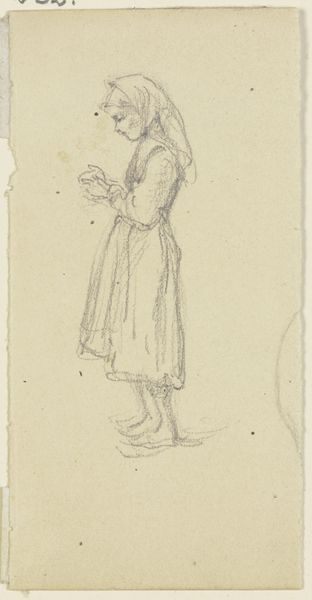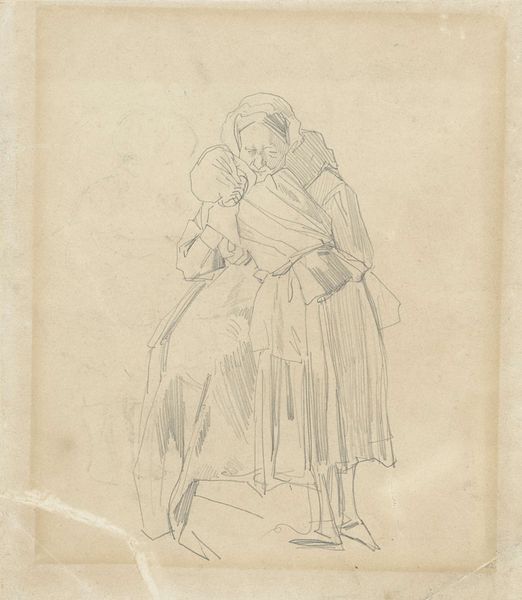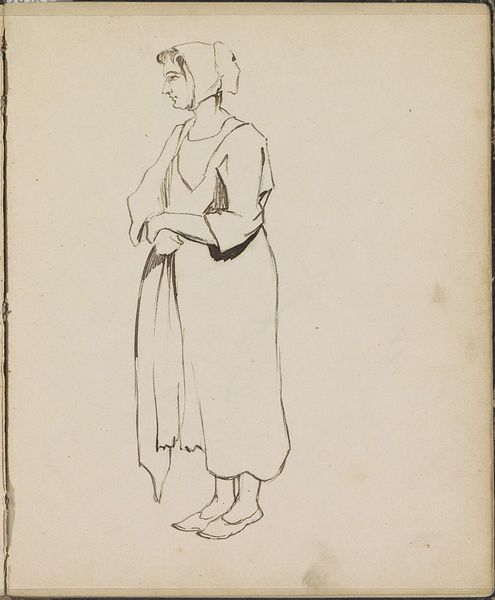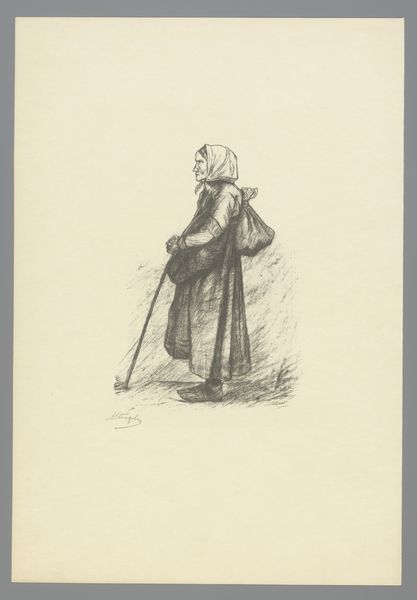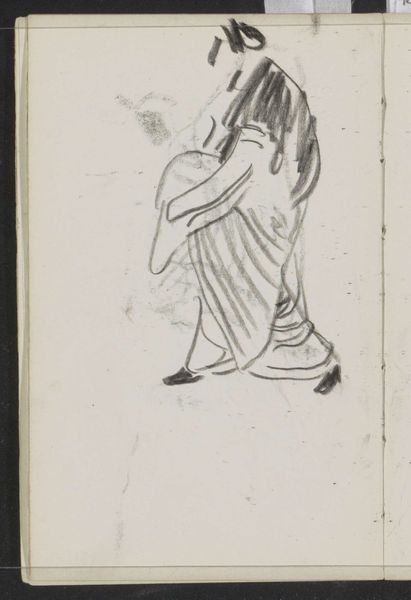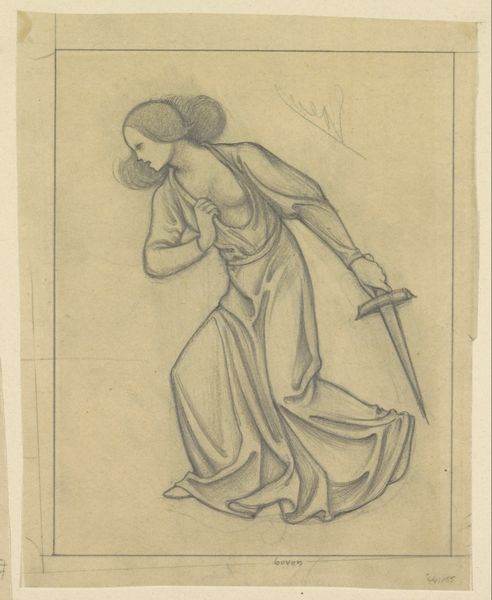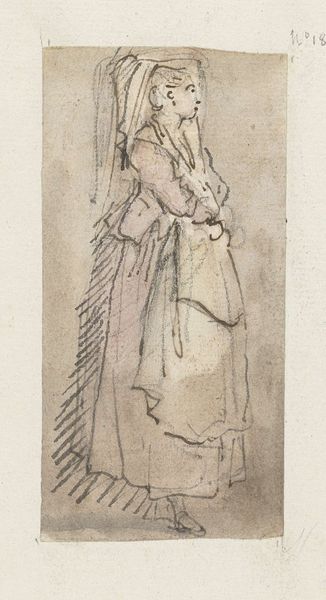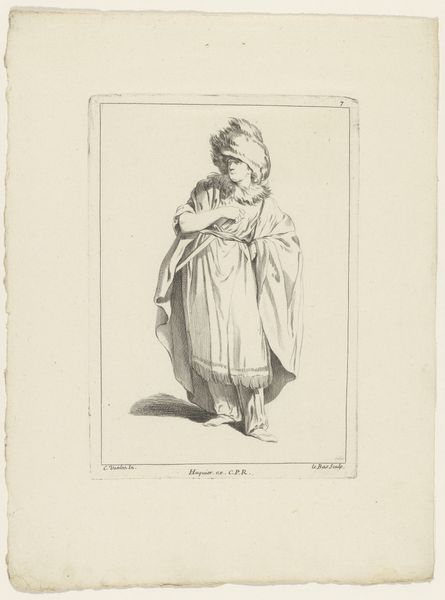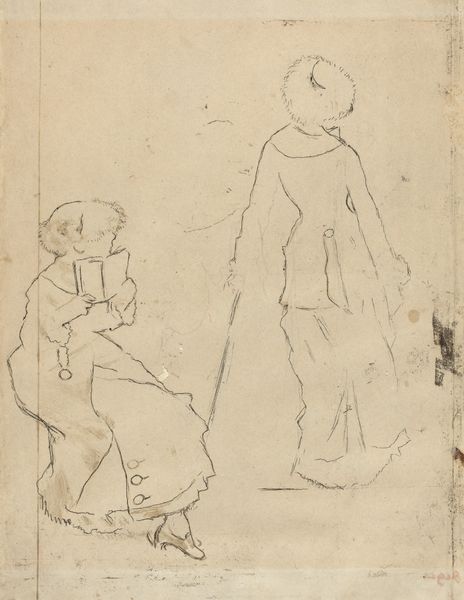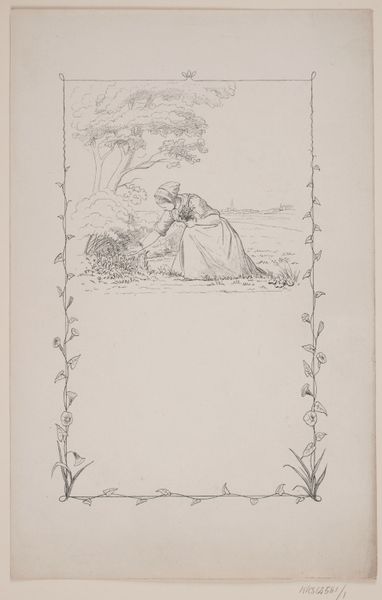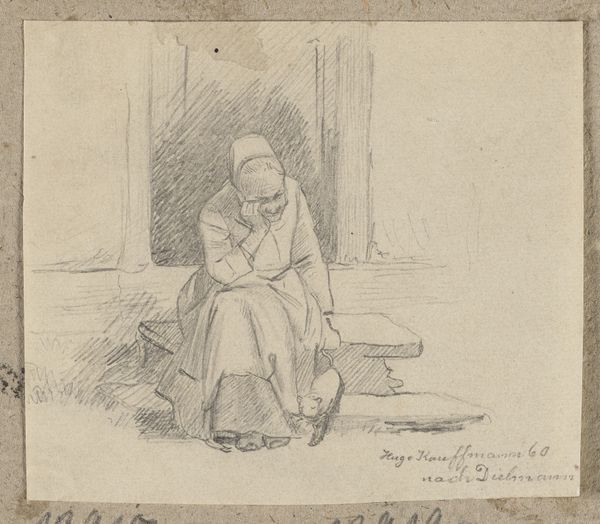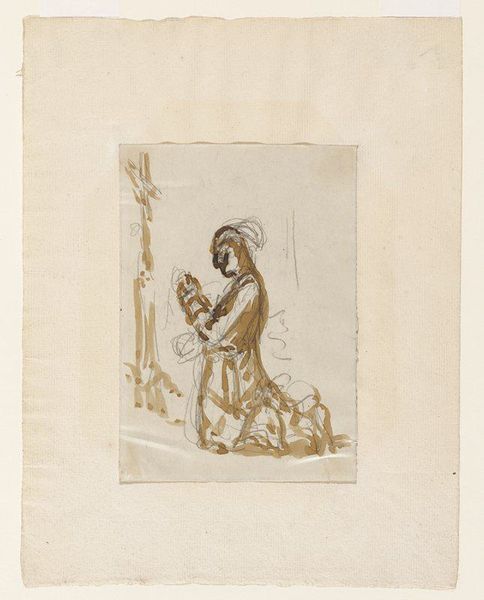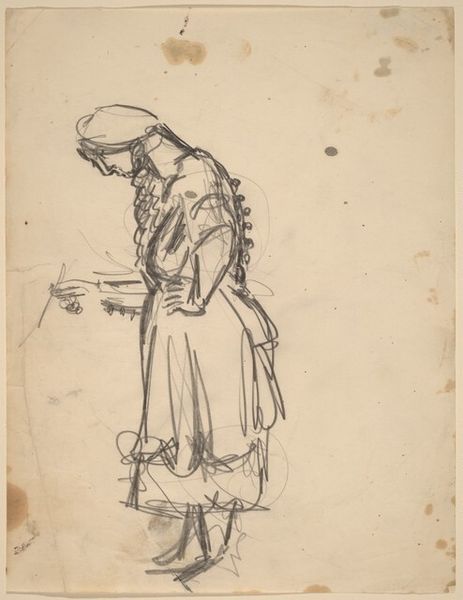
drawing, paper, pencil
#
portrait
#
drawing
#
16_19th-century
#
figuration
#
paper
#
romanticism
#
pencil
#
history-painting
Copyright: Public Domain
Editor: Here we have "Auf den Knien betendes Mädchen," or "Girl Praying on Her Knees," a pencil drawing on paper. It’s attributed to Marie Ellenrieder. The fragility of the line work gives the scene such a delicate, almost ephemeral feel. What draws your eye when you look at this? Curator: As a materialist, I find myself thinking about the socio-economic context of paper production during Ellenrieder’s time, roughly the 19th century. Was this paper readily available, or a luxury item, affecting the creation of art? Pencil too – the industrial processes involved in graphite mining and pencil manufacture… these shaped artistic possibilities. Editor: I hadn't considered that. I was more focused on the artist’s skill. The fineness of the pencil lines makes it so detailed. Curator: But isn't that 'skill' dependent on access to industrially produced pencils and processed paper? We often separate artistic expression from the material conditions that enable it, creating a hierarchy where the ‘idea’ trumps the means of production. What labor practices created the paper and the pencil? Who benefitted? Considering such questions changes how we understand the art object. Editor: So, instead of simply seeing a devotional image, you see a product of industrial society? Curator: Exactly! We see both. The praying girl certainly invites spiritual reflection, but the material reality of its creation forces us to acknowledge the labor and consumption embedded in even the most seemingly ethereal artwork. Consider what the means of accessing those materials meant for a female artist in that time. Editor: That shifts my understanding of the work considerably. I hadn’t really thought about it as a material object connected to broader social and economic systems. Curator: Precisely. Thinking about materiality, the act of making, and how that interplays with social context adds depth to our viewing experience. Editor: It's fascinating to consider the layers of context behind a seemingly simple drawing. Thanks!
Comments
No comments
Be the first to comment and join the conversation on the ultimate creative platform.
